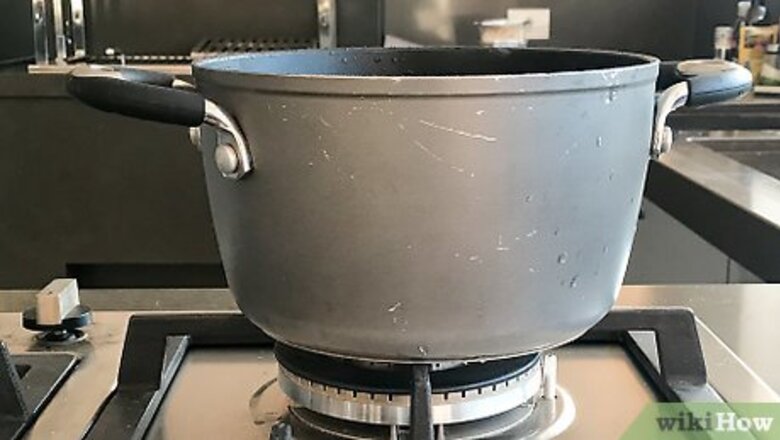
views
Staying Safe
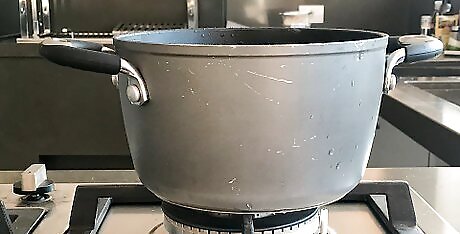
Use a pot large enough to leave 3 inches (7.6 cm) of space above the oil. Oil can bubble up and pop, and you don't want it to spill over. Spillover can lead to a grease fire. Make sure your pot is deep enough to cover the food completely and leave space at the top if you're deep-frying or come halfway up the food if your shallow-frying. If you're not sure, pick a larger pot.
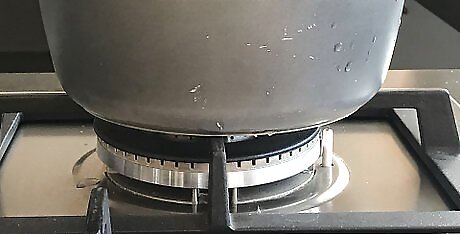
Pick a stable pan with a heavy bottom. Some smaller saucepans tip over easily, and you don't want that to happen with hot grease. Make sure the pot you use is heavy and stable on the stove.
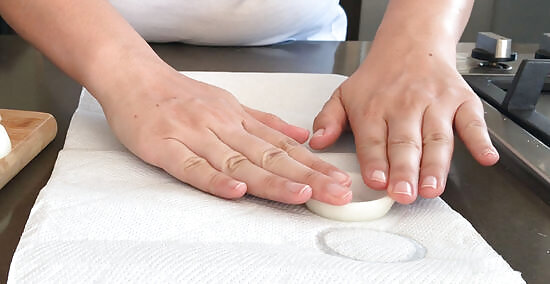
Dry all food well before coating it in batter. Excess moisture will cause your oil to pop all over the place, including all over you. Dry off the food you're going to use to prevent this problem. Pat food dry with a paper towel.
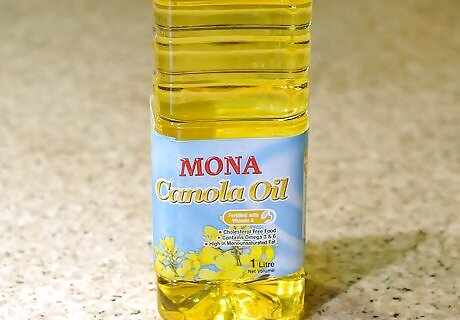
Choose an oil with a high smoke point. If your oil doesn't have a high smoke point, you could end up filling your kitchen with smoke, which is a hazard. Typical frying oils include peanut, corn, or canola oil, all of which have high smoke points. Often, you'll be frying foods under 400 °F (204 °C), so look for an oil with a smoke point above this temperature. You can check the smoke points for oils online.
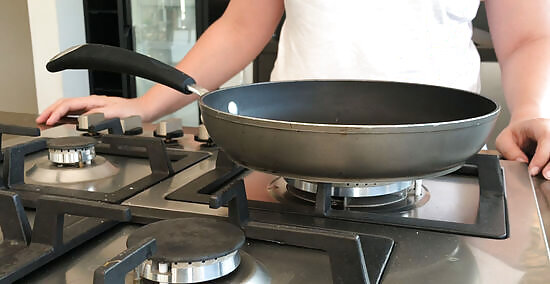
Turn the handle towards the inside of the stove. If the pan you're using has a handle, make sure it's not sticking out away from the stove. Someone could knock into it and spill hot oil everywhere.
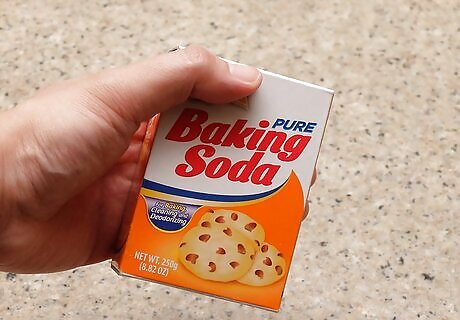
Use a fire extinguisher or baking soda to put out a grease fire. If the worst does happen, don't pour water on a grease fire. It will only make it worse. Turn the heat off on the pan first, then use a fire extinguisher or baking soda to smother the fire. If you don't have one of these two things, use a metal lid to smother the fire before it gets out of hand. Place the lid over the pan to smother it. You can also use a baking sheet. Make sure to use a fire extinguisher meant for grease fires. You can use a class B extinguisher or a multipurpose extinguisher that includes class B.
Deep-Frying
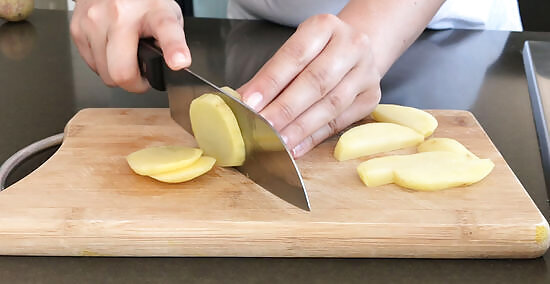
Cut your food into similarly sized pieces. Food that's about the same size will cook in roughly the same amount of time. Slice or break up your food into even chunks before you batter it.
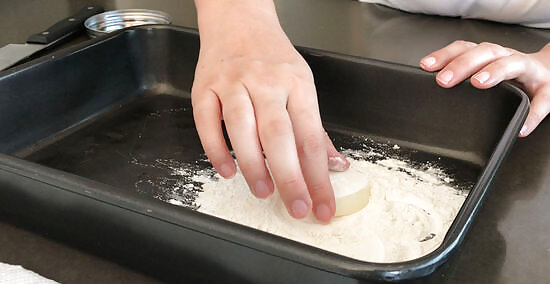
Dredge the food in seasoned flour if you're using a batter. Some foods, like potatoes, won't need a batter. However, if you're making battered shrimp or something similar, you need to coat it in flour so the batter will stick properly. Salt and pepper are enough to season most flour; you just need a pinch or two, mixed into the flour. However, you could also use a couple of dashes of seasoned salt or other spices, depending on what you're making. For instance, you could use garlic powder, onion powder, cayenne pepper, chipotle powder, or cumin.
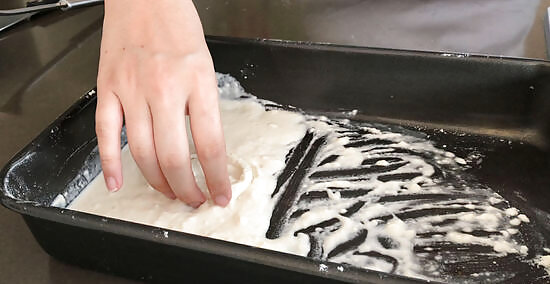
Batter foods as necessary. Dip vegetables or meat in batter, and let it rest for a minute or two, especially for slippery foods. That will help it stick better when it goes in the hot oil. To make a simple batter, mix together 1 cup (120 grams) of plain flour, 1 teaspoon (6 grams) of baking powder, 1/2 of a teaspoon (2.5 grams) of salt, 0.5 cups (120 mL) of milk, and 0.5 cups (120 mL) of water. Whisk the ingredients together until they're light and airy. Throw out batter after 4 hours because it will get too thick.
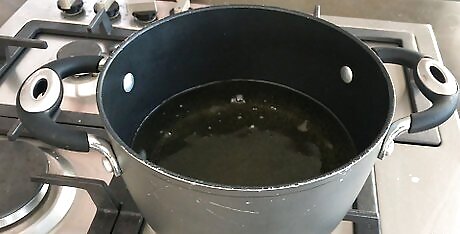
Heat your oil to 365 to 375 °F (185 to 191 °C). Check the recipe first to see what the best temperature is, but usually, this range will be okay for most foods. Use a candy or frying thermometer to check the temperature. If your oil is too hot, you'll burn the food. If it's too low, your food will take in too much grease.
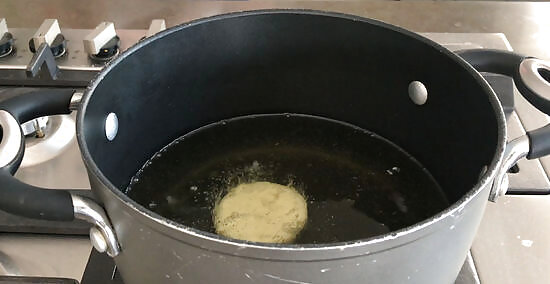
Add food to the oil slowly. If you drop your food in from too high a distance, you'll splash hot oil everywhere, which could cause burns. Use a wire basket or a long-handled slotted spoon to lower the food into the oil. Stay back from the oil as far as possible. Choose long-handled utensils to use while cooking.
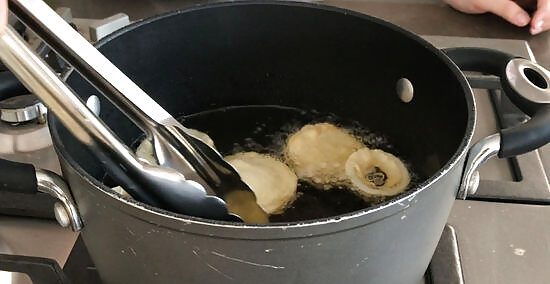
Work in small batches. If you add too much to the pot, the food won't cook as evenly. Plus, it will be hard to see when pieces are done. Cook a couple of pieces at a time so you can monitor them more closely. As you put the next batch in the oil, bread the next batch inline, and set it to the side to drip off a little.
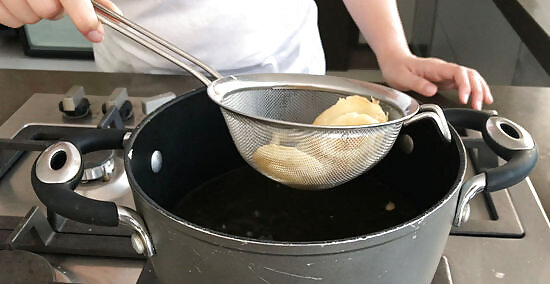
Remove the food with a skimmer or slotted spoon when it turns golden brown. Sometimes, the food can take as little as 30 seconds to cook, particularly if the inside is already cooked when you bread it. Other foods may take 2-3 minutes. Some foods will float when they're cooked through but not everything will. For instance, fried shrimp will take about 1 minute, while tempura vegetables will generally take 1 1/2-2 minutes. If you're not sure if the inside is done, cut into a piece to see it if is cooked through.

Let the food drain on paper towels. Some of the grease will drain away, making it a bit healthier. You can also drain it on a wire rack over a baking pan. You can pat some of the grease off the top of the food, too. To keep food warm, set it in an oven preheated to 300 °F (149 °C).
Shallow-Frying

Create a coating for your food. Create a mixture of flour and a couple of dashes of seasoned salt. Mix 1 cup (240 mL) of water or buttermilk, 2 large egg whites, and 2 tablespoons (30 mL) of vodka or other neutral alcohol for an egg mix. Dip the food in the flour mixture, then in the egg mix. Next, dip the food in breadcrumbs, flour, cracker crumbs, or cornmeal to finish the breading. Try cornmeal for fish or vegetables like squash, flour for chicken or cube steak, and cornmeal or cracker crumbs for chicken tenders. You can add any seasonings you'd like to the second coating, such as onion powder, garlic powder, cumin, oregano, cayenne pepper, salt, and pepper. This coating works well for things like chicken, cube steak (chicken fried steak), tomato, squash, and onion. You can also just use flour for a light coating, which works well on fish. Let the pieces rest on a wire rack for a few minutes to help the coating adhere better.
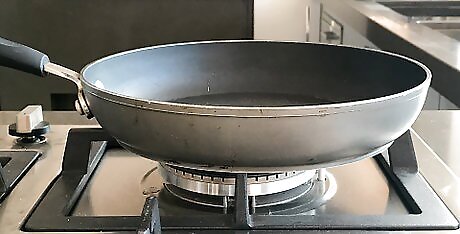
Heat a deep skillet over medium-high heat. The skillet should be deep enough to hold the food you're frying. Heating the pan before the oil helps to prevent food from sticking. Wait a few minutes for the pan to heat up. Heavy-bottomed skillets will cook food more evenly.

Pour enough oil into the skillet so it will come halfway up the sides of the food. Once the oil has heated for a bit, drop a bit of water into it. It should sizzle and pop if it's hot enough. If your recipe specifies a temperature, use a frying thermometer to check the oil.
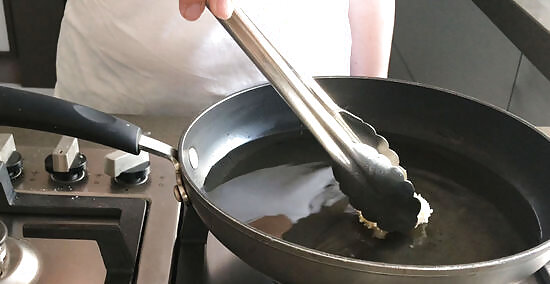
Set the food lightly in the pan. Use tongs or a long-handled spatula to gently set the food down. You don't want the hot grease to splatter on you, as it can burn. Put the side down first that you want to be the crunchiest and look the best.
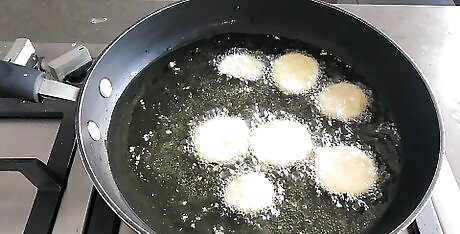
Cook the food in batches. If you crowd the pan, you'll end up with soggy coatings. Crowding produces steam, so you'll be steaming the coating instead of frying it to a nice crisp. Keep food apart so it doesn't touch while cooking. As you cook one batch, bread the next set of food, getting it ready to go in the oil.

Remove the food when it turns golden brown. Cook chicken pieces to an internal temperature of at least 165 °F (74 °C), beef to at least 145 °F (63 °C) or 160 °F (71 °C) if you want it well-done, and pork to 160 °F (71 °C). When cooking potatoes or coated vegetables, they should be golden brown when done.
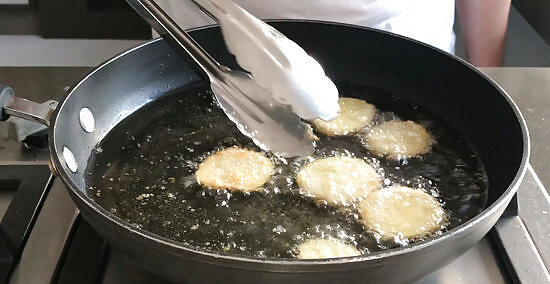
Flip the food only once. If you flip the food more often, it can cause the breading to come off. Check the recipe to see how long you should cook the food on each side. Wait until the bottom has browned nicely before flipping it over.
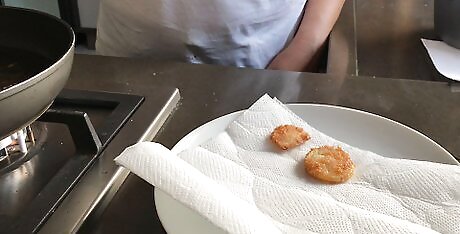
Let the food drain on paper towels while you finish cooking. While it's best to serve shallowly fried food as soon as possible, you can let it rest for a few minutes while you're finishing up the other batches. Paper towels will help soak up the excess grease.

















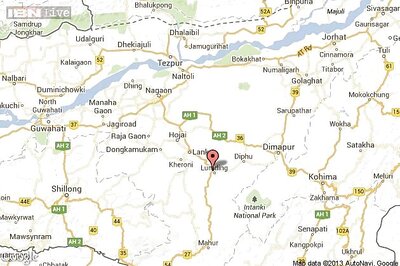
Comments
0 comment